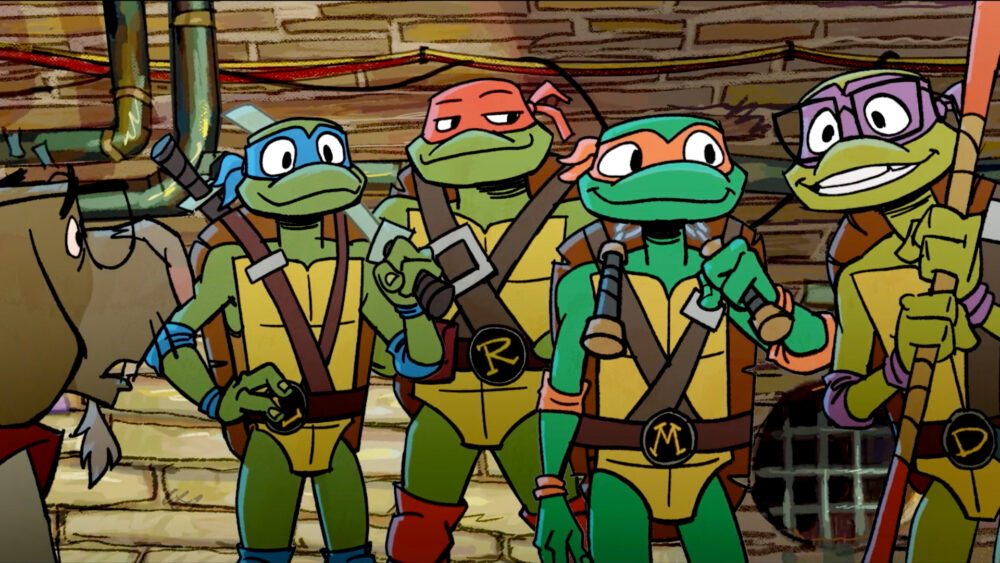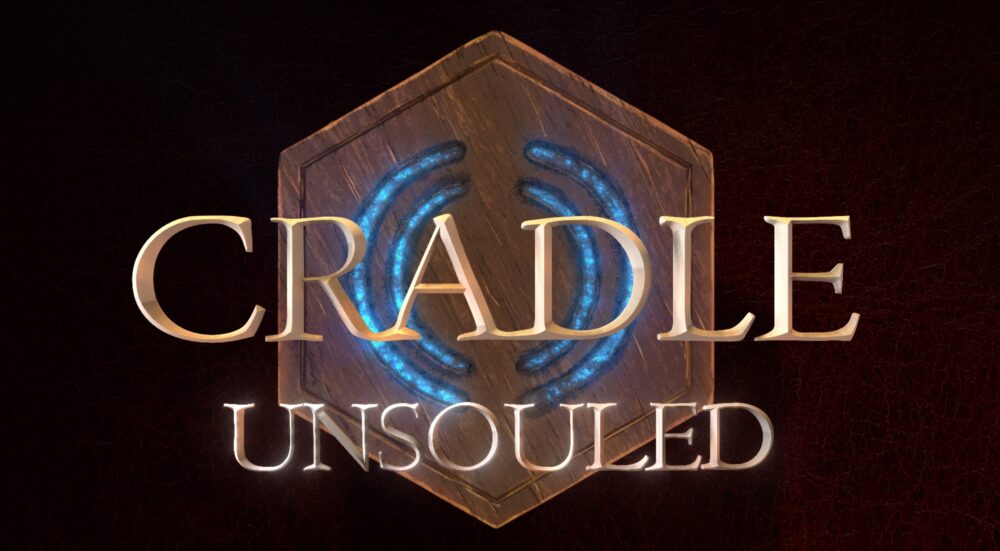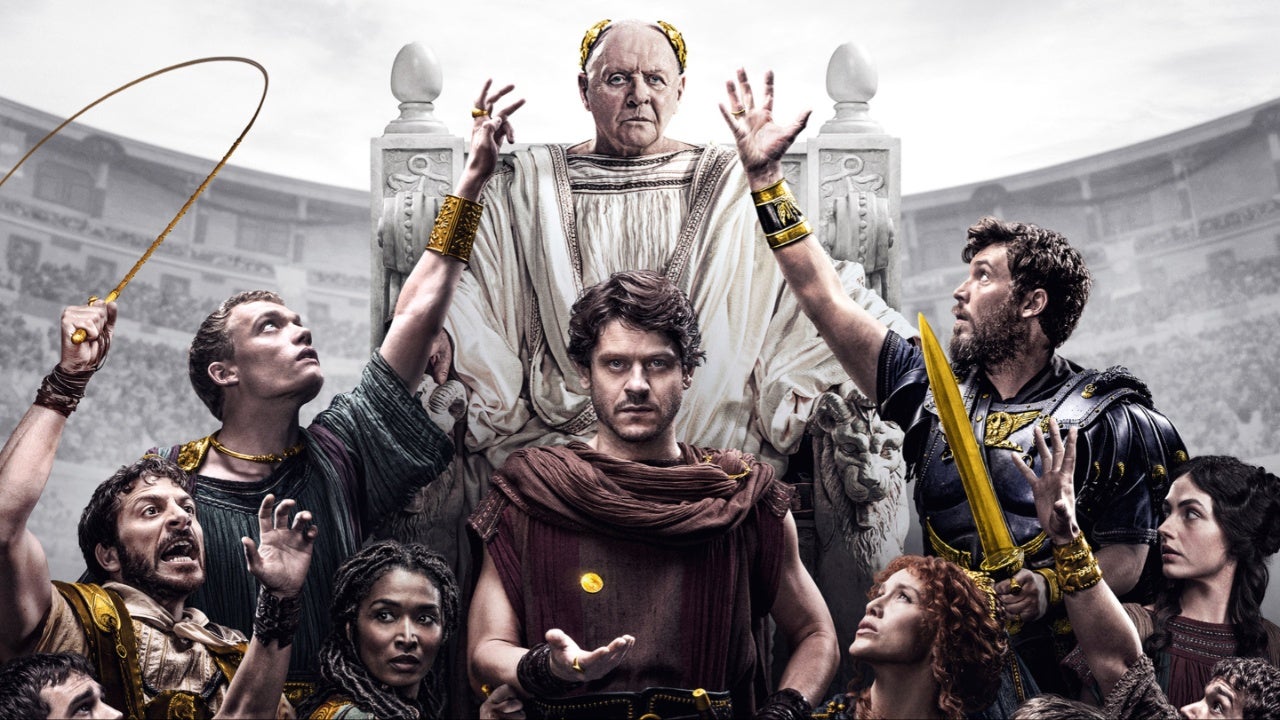There are two reviews to be written about Master of Dark Shadows, a new documentary nominally about producer/director Dan Curtis. For those of you already immersed in his work, there’s not much in the film you won’t already know.
Worse, much of Curtis’ career is reduced to bullet points between the demise of “Dark Shadows” — the Gothic soap he created in 1966 — and his expensive television collaborations with Herman Wouk in the 1980s, “The Winds of War” and “War and Remembrance.” The cover art might depict Carl Kolchak, the Zuni Fetish Warrior from “Trilogy of Terror” and Bette Davis in “Burnt Offerings,” but “Master of Dark Shadows” breezes past them with barely a mention. Worse, they’re referenced only in regards to Curtis’ interest in escaping the horror ghetto, which is not especially flattering to those works or their fans.
Still, as someone who loves many of the movies and television series touched upon in the film, it felt nice to spend a little time with old friends. Master of Dark Shadows might be a glorified obituary, but it’s an obituary for someone whose work I adore. I’m glad this movie exists, even if the content is a little underwhelming.
 For those of you less familiar with Curtis, think of Master of Dark Shadows not as an obituary, but as a 100-level college course. From a cultural perspective the movies and television shows he created, produced, directed or championed make up some of the fundamentals of American horror. I’d put Dan Curtis in the same category as Rod Serling, Richard Matheson and sure, even Joss Whedon.
For those of you less familiar with Curtis, think of Master of Dark Shadows not as an obituary, but as a 100-level college course. From a cultural perspective the movies and television shows he created, produced, directed or championed make up some of the fundamentals of American horror. I’d put Dan Curtis in the same category as Rod Serling, Richard Matheson and sure, even Joss Whedon.
You always know when you’re watching a Dan Curtis production, credits be damned. They’re deeply American in their sensibilities, which often makes them difficult to parse. He shares Hammer’s interest in formal wear and cleavage, but none of their sense of grace and moral tradition. I’ve compared his first feature, House of Dark Shadows, to Italian Giallo films, but that comparison falls shy of being correct because of the stodgy displays of sexuality in his movies. Curtis also loved classic monsters like vampires, ghosts and witches, but preferred to slam them together against the nihilistic sensibilities of 1970s cinema. There are no happy endings in a Dan Curtis production.
Of course, none of this is really discussed in Master of Dark Shadows. Instead, director David Gregory holds our hand as he walks us briefly through the early days of Curtis’ career as a salesman for syndicated television and his first real success as a producer, bringing golf to television with “Challenge Golf.” Curtis was able to parlay this success into making a pitch for a dramatic series, negotiating with ABC in 1966 for a project that became Dark Shadows. After a slow start, the Gothic soap became a television sensation, and it’s here in the film that Jonathan Frid wrestles away control of the narrative from both Curtis and Gregory. Which is no small feat for a man who has been dead since 2012.
Despite being billed as “The Gothic World of Dan Curtis,” the majority of Master of Dark Shadows is spent discussing Dark Shadows. And whenever you discuss Dark Shadows, you’re going to spend most of your time talking about Frid, the Canadian actor who joined the cast more than 200 episodes into the show’s run and became a pop culture sensation. The gaunt, middle-aged alumnus of Yale and Oxford was set to retire from acting when offered the role of Barnabas Collins…a year later he found himself an unlikely teen heartthrob appearing on the covers “Tiger Beat” and “Sixteen” alongside Davey Jones and David Cassidy.

Image courtesy of collinsporthistoricalsociety.com
More than an hour passes before Master of Dark Shadows moves on from Dark Shadows and Jonathan Frid, spending about 10 minutes on his Herman Wouk adaptations (the first of which, The Winds of War, cost a whopping $38 million to produce — less than some actual wars) before moving back to… Dark Shadows. In this case, it’s the 1991 prime-time “revival” series for NBC, but even in this sequence — the final one in the documentary — you can sense resentment from Curtis over having to return to the well.
Ben Cross, the actor who succeeded Frid in the role of Barnabas Collins, says Curtis wanted to distance himself from the original series to such an extent that he asked the cast not to watch it. Decades later, on another channel and shooting on a different coast, Curtis still found himself in the shadow of Jonathan Frid.
Master of Dark Shadows closes on footage from the 50th anniversary Dark Shadows Festival in 2016 in Tarrytown, New York, and some words from Curtis that Gregory must not have digested. “I’ve always said I’d be remembered for Dark Shadows,” Curtis says in an interview taped sometime before his death in 2006. “And not things I really cared about, which were the great epics that I made. ‘Dark Shadows’ will be the thing that will be on my gravestone.”
When the closing credits begin to roll, it’s over the face of Frid as Barnabas Collins, fangs bared in a panel from the 1971 Dark Shadows newspaper comic strip.

Image courtesy of collinsporthistoricalsociety.com
Frid manages to upstage Curtis in the documentary’s bonus features, too. Among them are a delightful 1968 appearance by Frid on “The Dick Cavett Show” in which the two actors try to out-manner each other. (The episode has been lost, but has been “reconstructed” with stills and audio of the appearance.) There’s amazing newsreel footage of Frid’s 1969 UNICEF Halloween appearance at The White House with Tricia Nixon, plus his “Shakespeare & Poe in the Shadows” PBS special from 1983.
Dark Shadows cast member Kathryn Leigh Scott takes us on a guided tour of the New York City studios used by the show in the 1960s, which is invaluable because the studio has since been demolished. And … well, there’s lots of great bonus features on Master of Dark Shadows. My reaction to the documentary might be lukewarm, but the special features make this disc an essential part of any Dark Shadows fan library.

You can find read more from Wallace on Dark Shadows at
http://www.collinsporthistoricalsociety.com

Events
Paramount+ Reveals Official Main Title Sequence for the Upcoming Series TALES OF THE TEENAGE MUTANT NINJA TURTLES

During the TALES OF THE TEENAGE MUTANT NINJA TURTLES panel earlier today at San Diego Comic Con, Paramount+ revealed the official main title sequence for the series. The sequence is composed by EMMY® nominee, Matt Mahaffey, known for his work on Sanjay and Craig, Rise of the Teenage Mutant Ninja Turtles, and Rise of the Teenage Mutant Ninja Turtles: The Movie and much more.
From the studios of the Mutant Mayhem film, the all-new Paramount+ original series TALES OF THE TEENAGE MUTANT NINJA TURTLES explores the adventures of everyone’s favorite pizza-loving heroes as they emerge from the sewers onto the streets of NYC. Leo, Raph, Donnie and Mikey are faced with new threats and team up with old allies to survive both teenage life and villains lurking in the shadows of the Big Apple. The series is produced by Nickelodeon Animation and Point Grey Pictures.
TALES OF THE TEENAGE MUTANT NINJA TURTLES is executive produced by Chris Yost (The Mandalorian, Thor: Ragnarok) and Alan Wan (Blue Eye Samurai, Rise of the Teenage Mutant Ninja Turtles, Teenage Mutant Ninja Turtles [2012 Series]). Production is overseen for Nickelodeon by Claudia Spinelli, Senior Vice President, TV Series Animation, Nickelodeon, and Nikki Price, Director of Development and Executive in Charge of Production.
In addition to the upcoming new series, stream all things Turtles on Paramount+.
Events
Comic-Con 2024: Those About to Die Activation
Events
DISNEY+ CASTS DANIEL DIEMER AS FAN-FAVORITE ‘TYSON’IN SEASON TWO OF “PERCY JACKSON AND THE OLYMPIANS”

in Hall H at San Diego Comic-Con, Rick Riordan and Disney+ revealed that Daniel Diemer (“Under the Bridge”) will star as fan-favorite cyclops “Tyson” in the epic adventure series “Percy Jackson and the Olympians.” Diemer joins Walker Scobell (Percy Jackson), Leah Sava Jeffries (Annabeth Chase) and Aryan Simhadri (Grover Underwood) as a series regular. The Disney+ Original series from Disney Branded Television and 20th Television will start filming its second season next week in Vancouver.
Season two of “Percy Jackson and the Olympians” is based on the second installment of Disney Hyperion’s best-selling book series titled “The Sea of Monsters” by award-winning author Rick Riordan. In the new season, Percy Jackson returns to Camp Half-Blood one year later to find his world turned upside down. His friendship with Annabeth is changing, he learns he has a cyclops for a brother, Grover has gone missing, and camp is under siege from the forces of Kronos. Percy’s journey to set things right will take him off the map and into the deadly Sea of Monsters, where a secret fate awaits the son of Poseidon.
Diemer stars as Tyson – a young Cyclops who grew up all alone on the streets, and finds it difficult to survive in the human world. Shy and awkward, with a heart almost as big as he is, Tyson soon discovers that Poseidon is his father, which means Percy Jackson is his half-brother… and that Tyson may have finally found a home.
Diemer recently starred in the Hulu limited series “Under the Bridge” based off the critically acclaimed book of the same name and a tragic true story of a missing teen girl in Vancouver in 1997. He will next star in the indie “Thug” opposite Liam Neeson and Ron Perlman for director Hans Petter Moland. Daniel was recently seen as the lead in the indie “Supercell” opposite Alec Baldwin and Skeet Ulrich and the lead in the film “Little Brother” opposite Phil Ettinger and JK Simmons. Daniel can also be seen in the Netflix series “The Midnight Club” and recently starred as the male lead in the breakout hit Netflix feature “The Half Of It” from producer Anthony Bregman and director Alice Wu. He is a graduate of Victoria Academy of Dramatic Arts in Vancouver.
Created by Rick Riordan and Jonathan E. Steinberg, season two of “Percy Jackson and the Olympians” is executive produced by Steinberg and Dan Shotz alongside Rick Riordan, Rebecca Riordan, Craig Silverstein, The Gotham Group’s Ellen Goldsmith-Vein, Bert Salke, The Gotham Group’s Jeremy Bell and D.J. Goldberg, James Bobin, Jim Rowe, Albert Kim, Jason Ensler and Sarah Watson.
The first season of “Percy Jackson and the Olympians” is available on Disney+
-

 Interviews1 day ago
Interviews1 day agoInterview With Heroes & Villains Creative Director Doug Johnson
-

 Streaming1 day ago
Streaming1 day agoApple TV+ announces season two for delightful kids and family series “Camp Snoopy
-

 Events1 day ago
Events1 day agoThat’s My E Coverage Of The Adult Swim’s Pirate Parrrty
-

 Events13 hours ago
Events13 hours agoParamount+ Reveals Official Main Title Sequence for the Upcoming Series TALES OF THE TEENAGE MUTANT NINJA TURTLES
-

 Events16 hours ago
Events16 hours agoDISNEY+ CASTS DANIEL DIEMER AS FAN-FAVORITE ‘TYSON’IN SEASON TWO OF “PERCY JACKSON AND THE OLYMPIANS”
-

 Interviews17 hours ago
Interviews17 hours agoComic-Con 2024: Will Wight’s Cradle
-

 Events16 hours ago
Events16 hours agoComic-Con 2024: Those About to Die Activation



